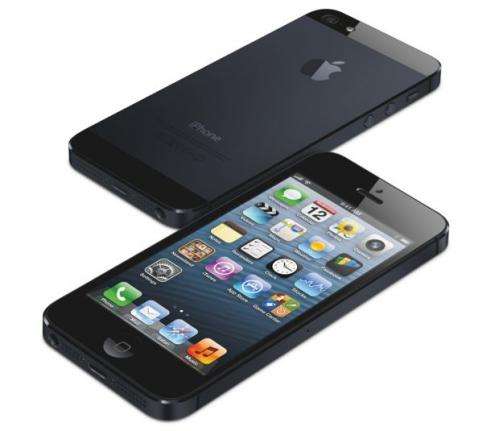Troy Wolverton: iPhone 5 still comes up short compared to rivals

Apple's new iPhone 5 is a well-crafted device that's likely please the company's fans and sell in the tens of millions. But if you're looking for something truly innovative in a smartphone, look elsewhere.
Its new features are welcome updates to the iPhone line. But they are incremental improvements, and many were pioneered long ago on rival phones. And the new iPhone still lacks some features that have long been standard in others.
When it comes to new smartphone features, Apple seems to not only be playing a constant game of catch-up to rivals such as Samsung and Nokia, but also falling farther and farther behind.
Compared with its predecessor, the iPhone 5 has a bigger screen, a faster processor and a thinner and taller body. It also has a new radio that will connect to the super-fast 4G LTE wireless networks and an aluminum - not glass - back that should be more durable.
Thanks to an update to iOS, the operating system that underlies the iPhone, the new device will offer users turn-by-turn driving directions and the ability to take panoramic photos from within its included camera application. It will also feature a new application called Passbook that will collect users' loyalty cards and event and travel tickets and let users post updates to Twitter and Facebook from within its notification center.
Call me jaded, but none of those features is terribly exciting. Android-based phones have sported screens as large as or larger than the new iPhone's for more than two years. Every new phone touts its speedy new processor. Free turn-by-turn directions has been a standard feature on Android phones for years, and some Android models have been LTE-powered for more than a year.
Apps within Apple's iTunes store already offered the ability to take panoramic photos, and that feature is already built into other devices. And while the Passbook app sounds useful, it also seems incomplete. Unlike other phones, you won't be able to use the new iPhone to board the bus or buy coffee by simply tapping it to a card reader, because it lacks an NFC chip, which makes such wireless transactions possible.
Apple says the new iPhone's battery will allow users to talk or Web-surf for 8 to 10 hours. That's more or less in line with previous iPhones, and what you'll get on Samsung's rival Galaxy S III. But it's pitiful compared with the battery life you get on one of Motorola's new Razr Maxx HD phone, which boasts 21 hours of talk time.
New phones from Samsung, Research in Motion and Nokia will all sport a new group photo feature that rapidly takes several images and automatically detects the faces within them. Users can then choose among several expressions for each person to get the best composite shot.
It's a neat feature and something that would seem a natural for the iPhone, given Apple's emphasis in recent years on the device's photo-taking capabilities. But you won't find it in the iPhone 5's native camera app.
Samsung's Galaxy line of phones has another cool feature that you won't find on the Phone 5 - the ability to beam files such as pictures and videos directly from one phone to another by just tapping the devices together.
To be sure, Apple, by not including such cutting-edge features, is simply going by its playbook. While the company has a reputation for being an innovator, its real genius has typically been to take innovations that are pioneered by others and find a way to redesign and market them so that they appeal to a mass audience.
And while the innovations that Apple is bringing to the iPhone 5 aren't new, they are new to iPhone users, notes Creative Strategies analyst Ben Bajarin. For consumers who wouldn't consider an Android or Windows Phone device, the new features in the iPhone 5 will be much appreciated.
But it's not just at the cutting-edge where the iPhone is falling behind. It lacks other features that, simply put, should have been baked in a long time ago.
For example, the new iPhone still won't let you quickly change common settings, such as switching on the Wi-Fi or Bluetooth antennas. Years ago, Palm's Web OS devices let you change such settings by simply tapping on an icon in the notification bar atop the screen from within any application. On many Android devices, you can do the same by tapping buttons found by pulling down on their notification bars.
On the iPhone, you have to find its setting app and frequently dive down within its menus to find the appropriate button.
Likewise, Android devices have long allowed users to run small programs called widgets on their home screens to get information such as the weather, sports scores or stock quotes without having to launch a browser or a full-screen app. Apple actually helped pioneer widgets on its Mac computers, but for some reason still won't let you run them on the iPhone.
Maybe the new iPhone's big new screen will help hide the ways it doesn't measure up to its rivals. But I'm guessing even Apple lovers will notice sooner or later.
More information: Troy Wolverton is a technology columnist for the San Jose Mercury News.
(c)2012 San Jose Mercury News (San Jose, Calif.)
Distributed by MCT Information Services



















